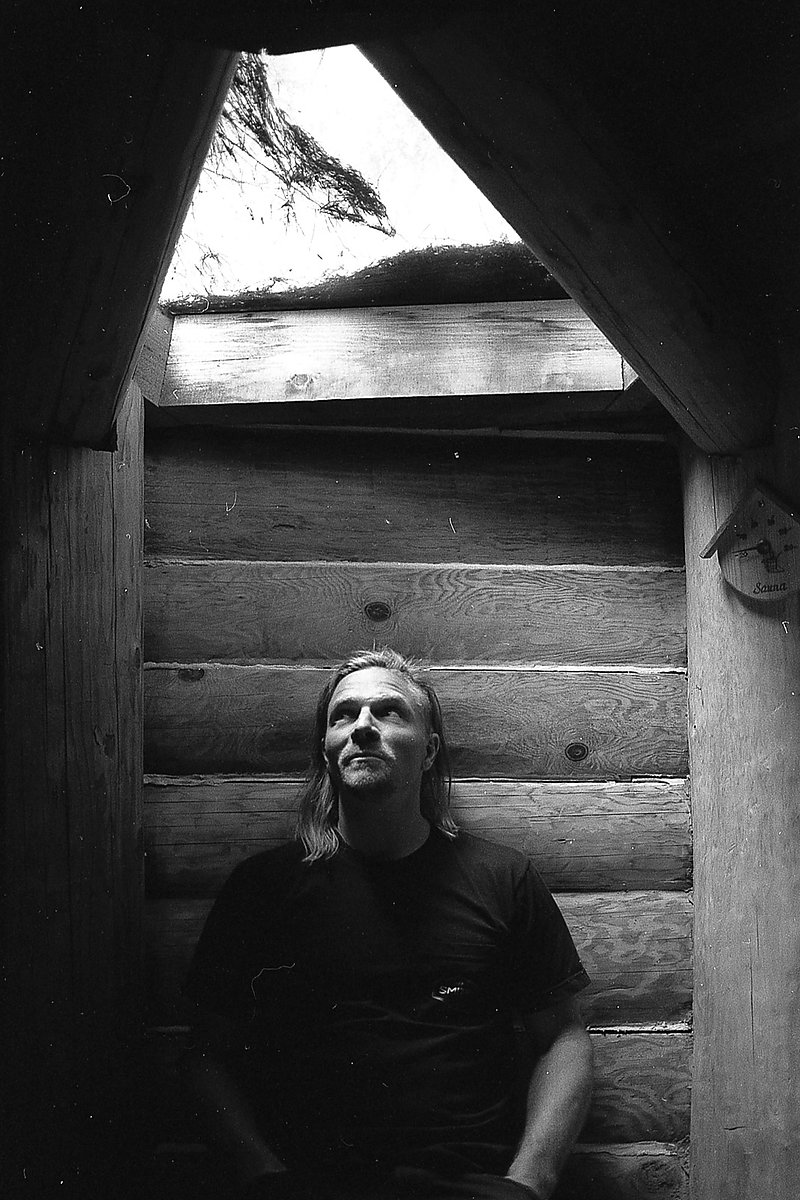
Backyard Oasis Hand-Built Hydrotherapy with Mark Abma
Words by Mark Abma
The trail winds right next to the squat structure, seemingly built out of a large stump with a grass roof and a slightly rounded door.
Teal water flows from the base into a deep stone pool, before pouring down into two similar basins below. The scene seems pulled from a J. R. R. Tolkien novel—until a blonde, blue-eyed Canadian emerges from the hut to plunge neck-deep into the upper pool’s icy waters.
This is no hobbit hole, nor is it extravagant landscaping. It’s legendary skier Mark Abma’s backyard in Pemberton, BC, and the dunk is part of his daily hydrotherapy routine, which he credits with helping him overcome multiple injuries during his 15-plusyear career. It’s also a great wake-up before riding the trails directly behind his home—and a great place to drink a beer afterward.
Abma first learned of hydrotherapy from a magazine at Whistler’s Scandinave Spa. The article described the benefits of the practice—by taking the body from hot to cold temperatures, it’s purported to help with everything from sore muscles to boosting the immune system.
Its most notable proponent is Wim “Iceman” Hof, a Dutchman who holds more than 25 world records and has become a somewhat controversial figure due to his claims of hydrotherapy’s benefits. But while research is far from conclusive, an increasing number of studies on hydrotherapy demonstrate measurable results, particularly when it comes to boosting the immune system and increasing bloodcell oxygen levels.
The “how” of hydrotherapy’s eff ectiveness remains unknown, but anyone who has spent time in a sauna after a big day of riding has felt its benefits. It’s why humans have been doing it for more than 2,000 years, and why Abma starts his summer mornings with a plunge into the frigid waters of his hand-built backyard oasis. As for how it became a reality? Well, that just took some committed friends, a lot of rock, and a few empty beer kegs.”


Step 1—The Sauna
There are a couple of mills in Pemberton that always have a refuse wood pile you can sort through in exchange for a case of beer. My roommates at the time were carpenters, and they helped with the post-and-beam work; a different friend helped with the stone work on the front and interior, as well as the spiral brick chimney. For insulation and to give the sauna a hobbit look, I dug up the grass from my front yard and placed it on the roof. Another friend donated the stove, and after more than a year of tinkering on weekends and evenings, it was all ready to light up.
Step 2—The Cold Pool
I had a bunch of river rock lying around on the property from other landscaping projects, and—working with the existing hillside we created a creek that flowed into the cold pool before waterfalling into a lower pool. The water is cold—it comes from a nearby glacier-fed creek, and the temp is nearly hypothermic. It took a substantial amount of rock and concrete, but we completed it in 10 days.
Step 3—The (Future) Hot Pool
A friend and I collected local basalt columns from the valley, standing them vertically for the backrest of the hot tub—or what will be the hot tub. We’ve been using it as another cold pool, but I’m hoping by this summer I’ll be able to heat it with wood fire, using a submersible stove a friend is building out of a few beer kegs. A lot of people helped make the whole thing happen, and it definitely felt like a community effort. It’s one of the more satisfying projects I’ve worked on, because it will give back to my friends and I in a positive manner.
Step 4—The Journey
The entire process—building out the spa, lighting the sauna and immersing myself in the cold water—is rewarding and rejuvenating, and one I believe will help me live a longer and healthier life. I continue to use hydrotherapy to heal my body and mind for many reasons, but a few are key. The sauna is great way to detoxify the body and increase blood flow to both the brain and body, which, in turn, helps with healing sore, tired or injured muscles. Being in the heat is also ideal for stretching and working through any aches or pains.
But as enjoyable as the sauna is, the cold plunge is really my favorite part of the journey. It stings and bites, but it’s through controlling my breathing and relaxing my body that I learn to control my mind. The shock to the system also helps flush out lactic acid and inflammation from a big day of biking or skiing, which gets my body ready for another big day.
During the summer, that’s how I start most of my mornings. It’s been shown that extreme hot or cold helps activate our mitochondria system—the energy generators in our cells—which, in turn, gives me a ton of energy.
It’s like taking a triple shot of espresso. But even doing it every day, it’s still a mental challenge.